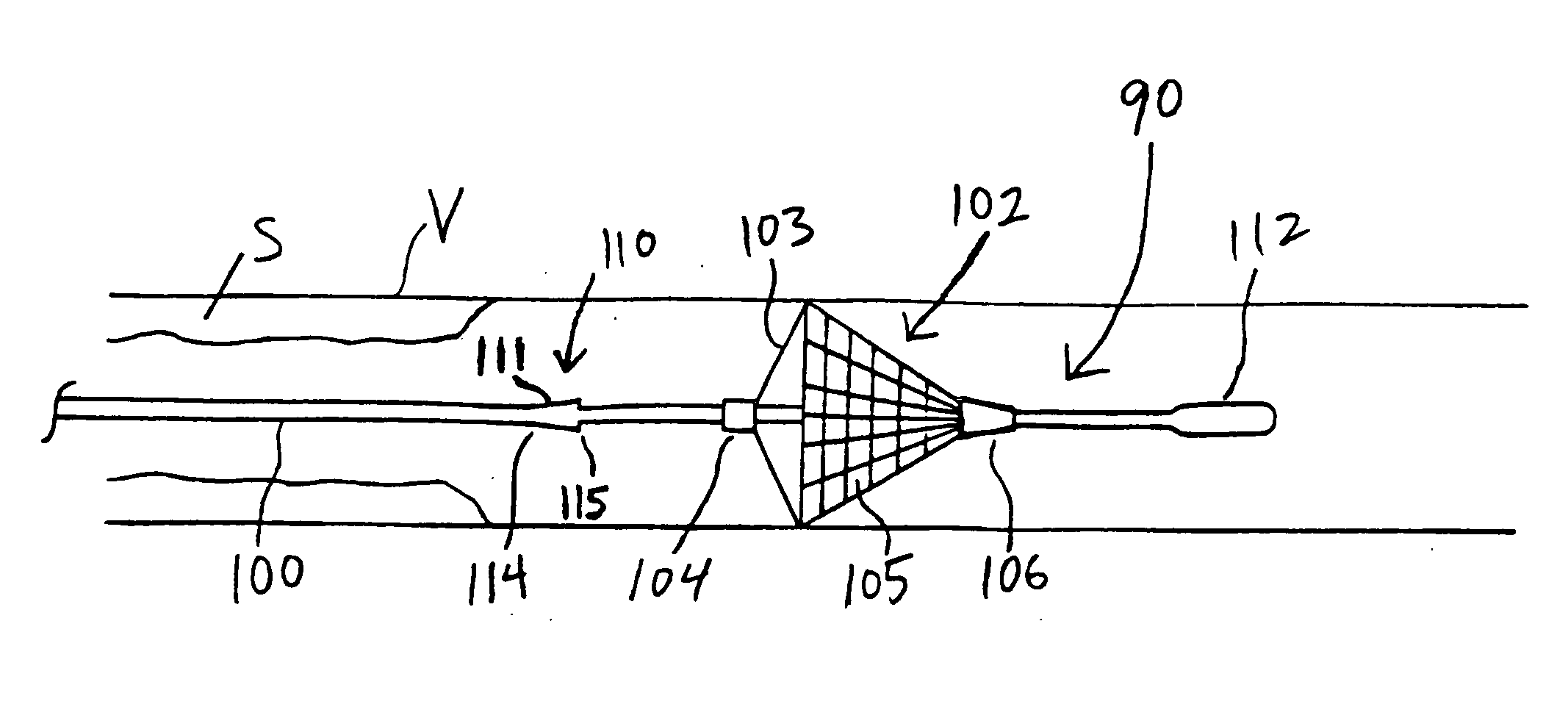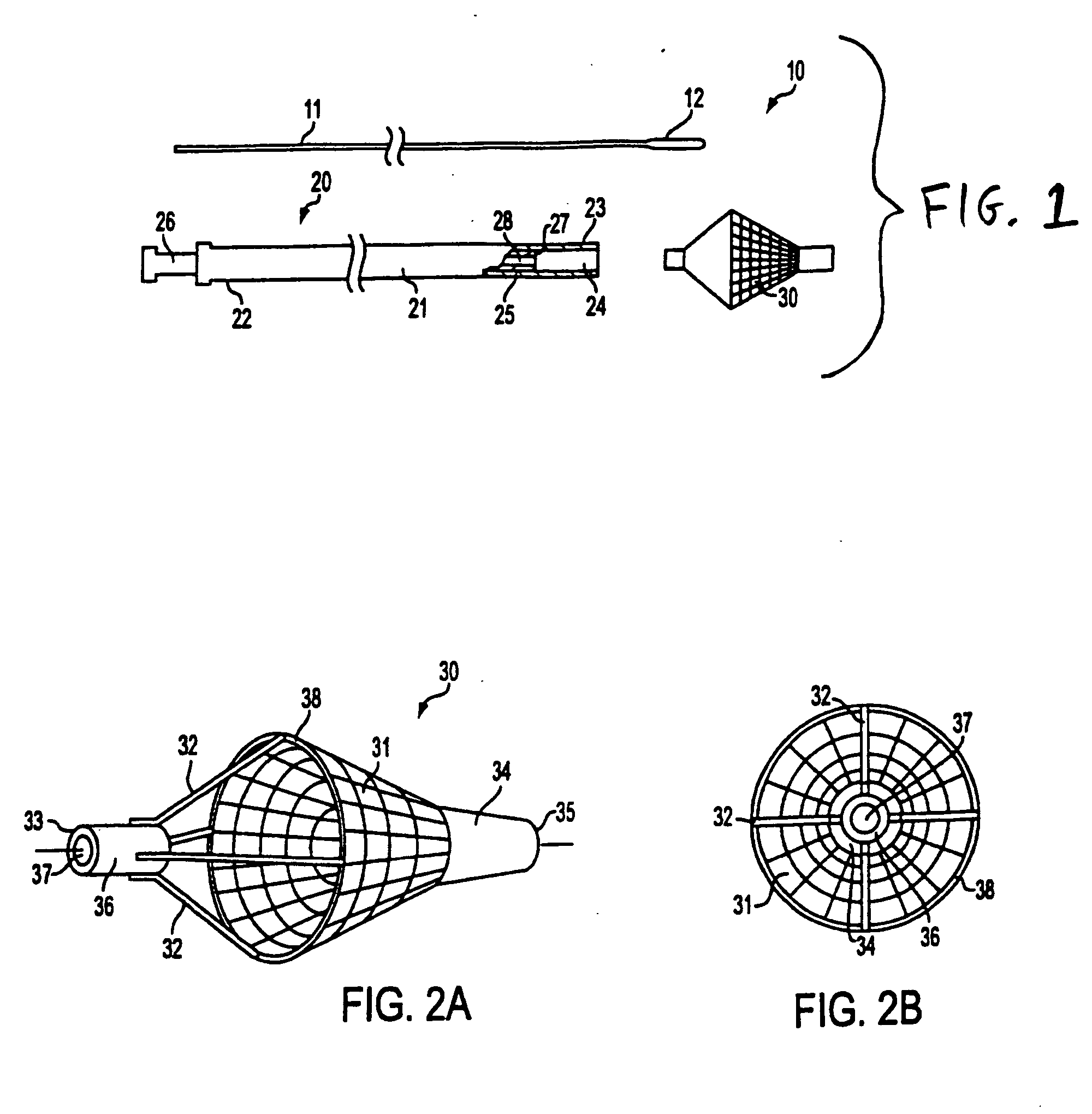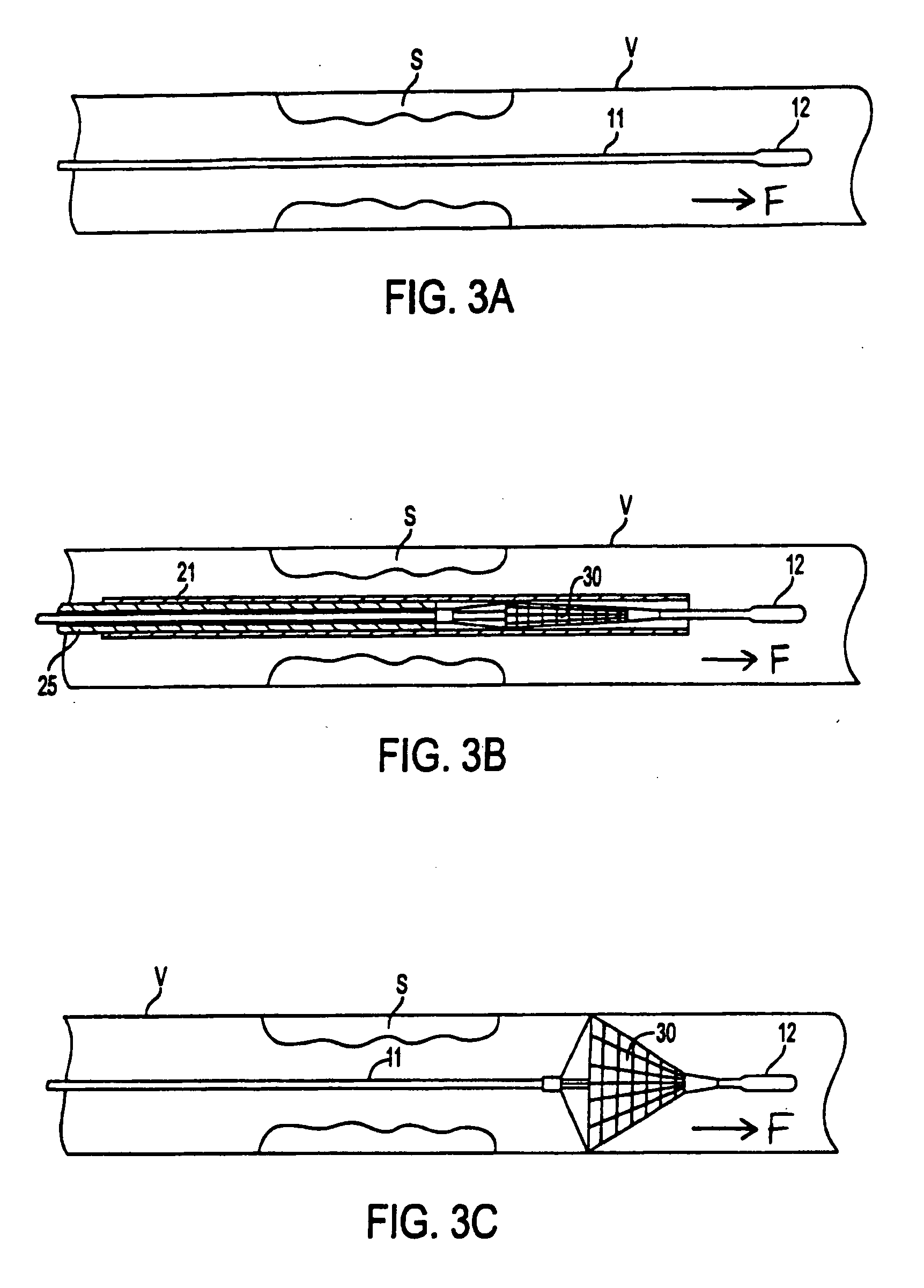Emboli filtration system and methods of use
- Summary
- Abstract
- Description
- Claims
- Application Information
AI Technical Summary
Benefits of technology
Problems solved by technology
Method used
Image
Examples
Embodiment Construction
[0036] The present invention is directed to an emboli filtration system and methods that filter out emboli generated during surgical or percutaneous interventional procedures. In accordance with the principles of the present invention, a filter element is captured on a guide wire so that the guide wire is capable of rotation and translation, without disturbing the placement of the filter element. Because the filter element is captured on the guide wire, however, the filter element is readily removed by retracting the guide wire into a sheath.
[0037] Referring to FIG. 1, apparatus 10 of a first embodiment of the present invention comprises guide wire 11, delivery sheath 20 and filter element 30. In accordance with the principles of the present invention, guide wire 11 includes enlarged diameter distal region 12. Guide wire 11 may be constructed of material commonly used in guide wire construction, such as stainless steel or a high strength polymer. Distal region 12, which acts as a d...
PUM
 Login to View More
Login to View More Abstract
Description
Claims
Application Information
 Login to View More
Login to View More - R&D
- Intellectual Property
- Life Sciences
- Materials
- Tech Scout
- Unparalleled Data Quality
- Higher Quality Content
- 60% Fewer Hallucinations
Browse by: Latest US Patents, China's latest patents, Technical Efficacy Thesaurus, Application Domain, Technology Topic, Popular Technical Reports.
© 2025 PatSnap. All rights reserved.Legal|Privacy policy|Modern Slavery Act Transparency Statement|Sitemap|About US| Contact US: help@patsnap.com



